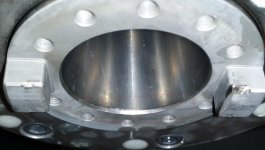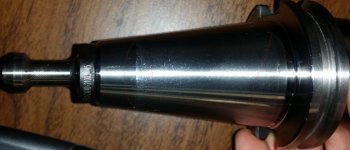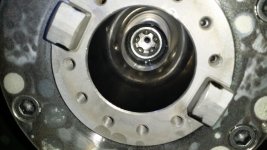DeltaVTech
Plastic
- Joined
- Dec 21, 2013
- Location
- Seattle, Wa
Hello,
I just crashed my new VF3 for the first time, broke a pull stud and scared the spindle taper on the top and bottom. This left corresponding scars on the tool holder shown in the attached picture.
I dont think its necessary/cost effective to regrind the entire spindle however I would like to remove the scars because they are causing small marks on my tool holders.
What is the recommended way to do this, is there a ct40 size finishing stone or hand tool well suited for the task?
Thanks,
I just crashed my new VF3 for the first time, broke a pull stud and scared the spindle taper on the top and bottom. This left corresponding scars on the tool holder shown in the attached picture.
I dont think its necessary/cost effective to regrind the entire spindle however I would like to remove the scars because they are causing small marks on my tool holders.
What is the recommended way to do this, is there a ct40 size finishing stone or hand tool well suited for the task?
Thanks,





